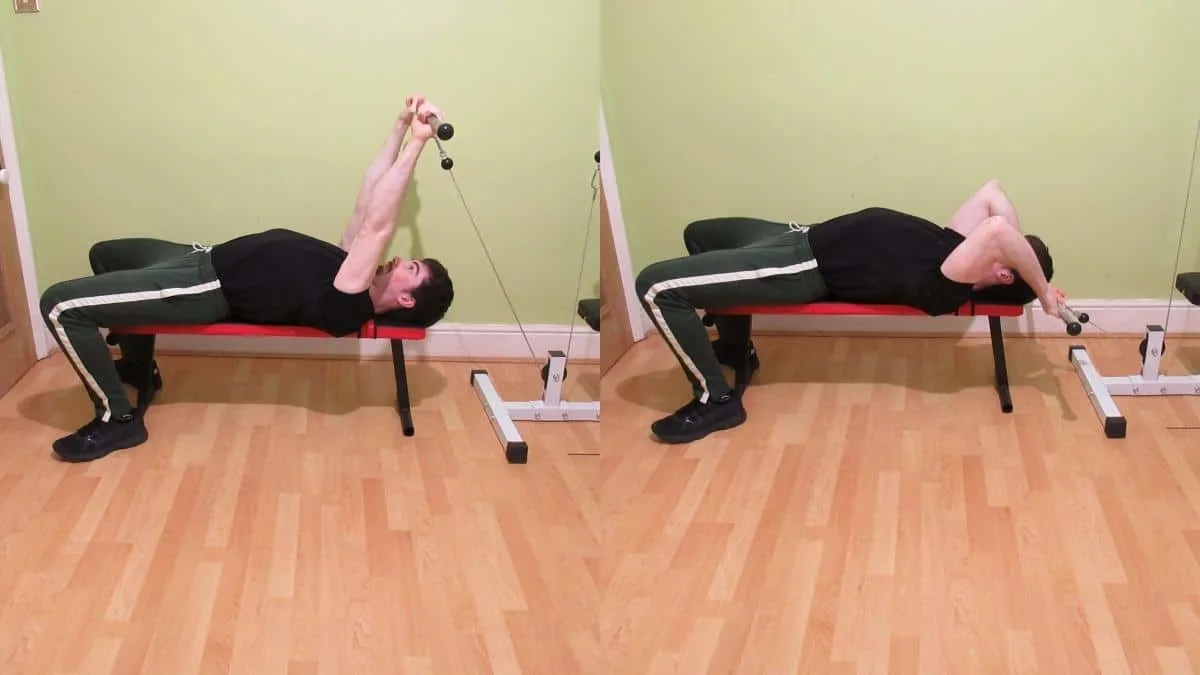The cable lying extension trains all three triceps brachii heads and is, therefore, an excellent exercise for building overall arm mass.
But what really separates the cable lying tricep extension from the competition is its long head emphasis and constant cable tension.
As the biggest of the three tricep heads, the long head accounts for roughly two-thirds of your triceps size. So considering that the triceps as a whole constitute around two-thirds of your upper arm mass, you can see just how critical good long head development is for increasing your overall arm size.
This tutorial shows you how to do cable lying tricep extensions with a bar and then demonstrates six more cable tricep extension variations that you can do with different attachments.
Related: Cable incline tricep extension│Cable tricep exercises
Cable lying tricep extension exercise details
- Main Muscles: Triceps
- Exercise Type: Strength
- Exercise Mechanics: Isolation
- Difficulty Level: Beginner
- Equipment Needed: Bench, cable machine, bar attachment
How to do a cable lying triceps extension
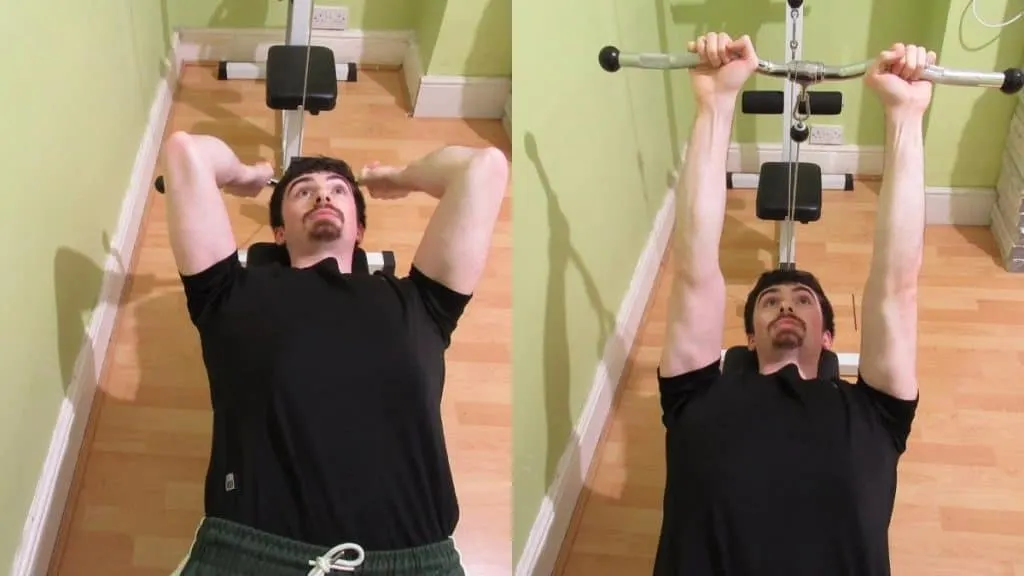
- Connect a curved cable bar to a low pulley.
- Wheel a bench close to the cable column so that it’s a foot or two away from the bar.
- Lie on the bench.
- Then, reach back and grab the bar with a close overhand grip.
- Flex your triceps until your elbows reach full extension.
- Reverse the motion by lowering the bar behind your head until you feel an intense stretch in the long (inner) head of your triceps.
- Perform 3-5 sets of 8-20 reps in total.
Lying cable tricep extension advantages
Unlike free-weight equivalents, lying cable tricep extensions challenge your triceps with constant tension and are compatible with a wide variety of attachments so that you can work your muscles from different angles.
Constant triceps tension
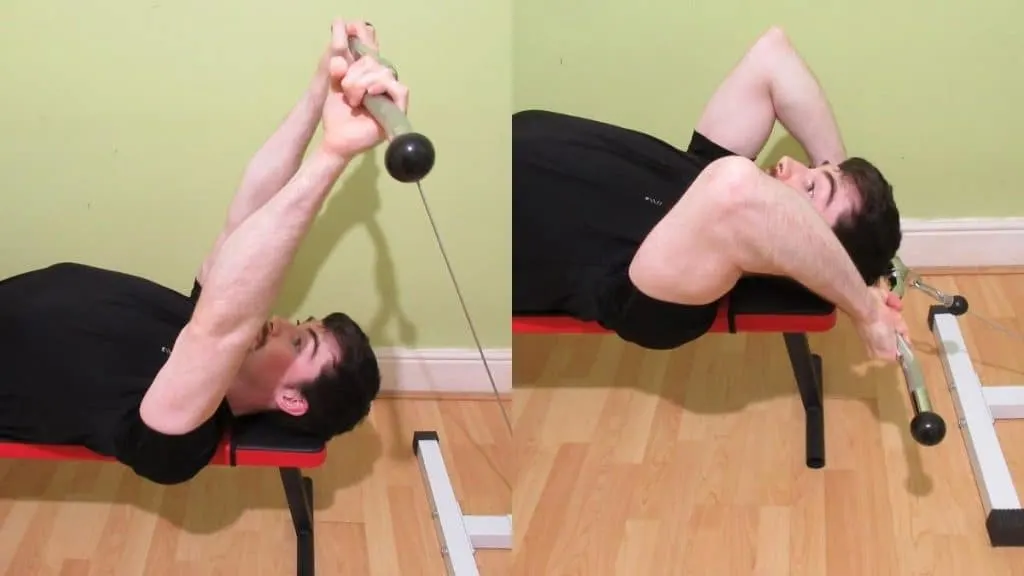
Lying cable triceps extensions tax your tris with constant tension throughout the entire duration of the set. This naturally leads to a more potent muscle pump because your triceps don’t get a chance to rest until the set is over.
The pump enhances the appearance of your arms while you’re training—especially during high-rep training—which is a mental benefit in the sense that seeing your physique become more aesthetic (even if only temporarily) can be very motivating.
Your triceps also receive more tension in general when you use cables rather than free weights because the resistance is more consistent. Free weights certainly get results, but when it comes to tricep extensions, there’s virtually zero tension at the top part of the rep because your joints are supporting the weight.
But with cables, the pulley is constantly exerting some kind of force on your triceps, which means that your tris always have to contract against resistance.
Built for progressive overload
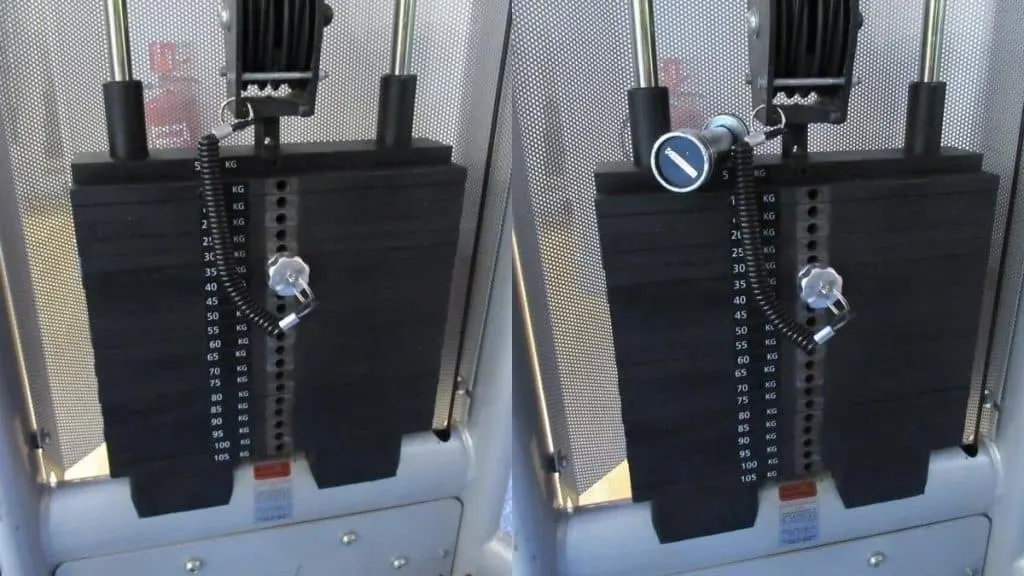
The lying cable triceps extension is built for progressive overload because most cable weight stacks ascend in small increments that make it easy to gain strength on a regular basis.
Of course, adding a few pounds to your working weight might not seem like a big deal, but these incremental weight progressions can really start to stack up over the weeks and months, which in turn translates into bigger, stronger triceps.
This extra strength will increase your performance during compound presses because it’s the triceps—not the chest and shoulders—that is primarily responsible for locking out heavy weights.
Completely customizable
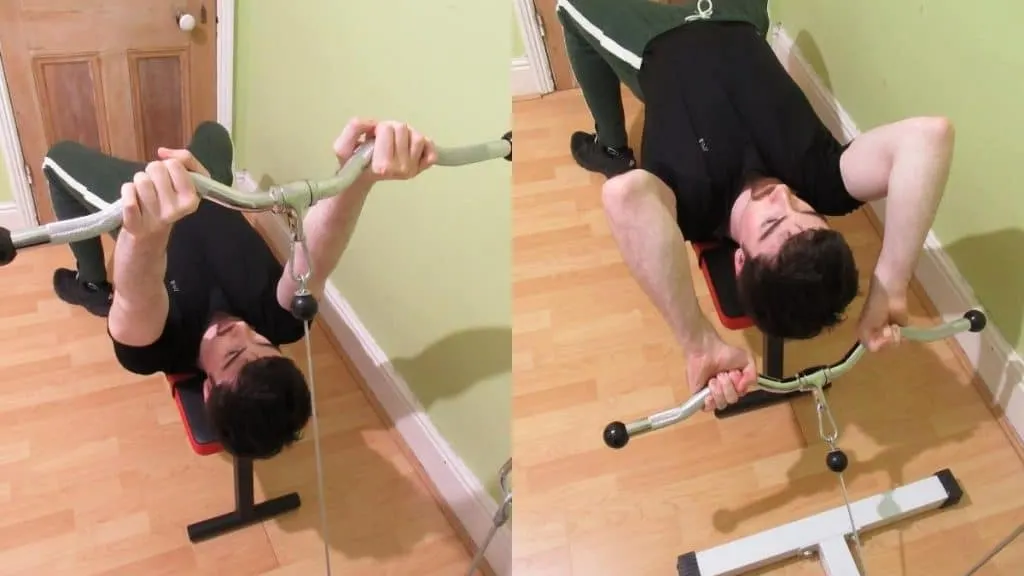
With the lying cable tricep extension, you’re not limited to any particular attachment or cable machine; the exercise is completely customizable.
As you’ll learn in the upcoming section, each attachment has its pros and cons. So depending on what’s more important to you (strength, pump, peak contraction, etc.), you might want to use one attachment over another.
Lying cable extension variations
There are countless variations of lying cable extensions that you can do to train your triceps (one for every attachment, in fact). This section discusses the pros and cons of each version so that you can decide which type of cable lying triceps extension is right for you.
Rope lying cable extensions
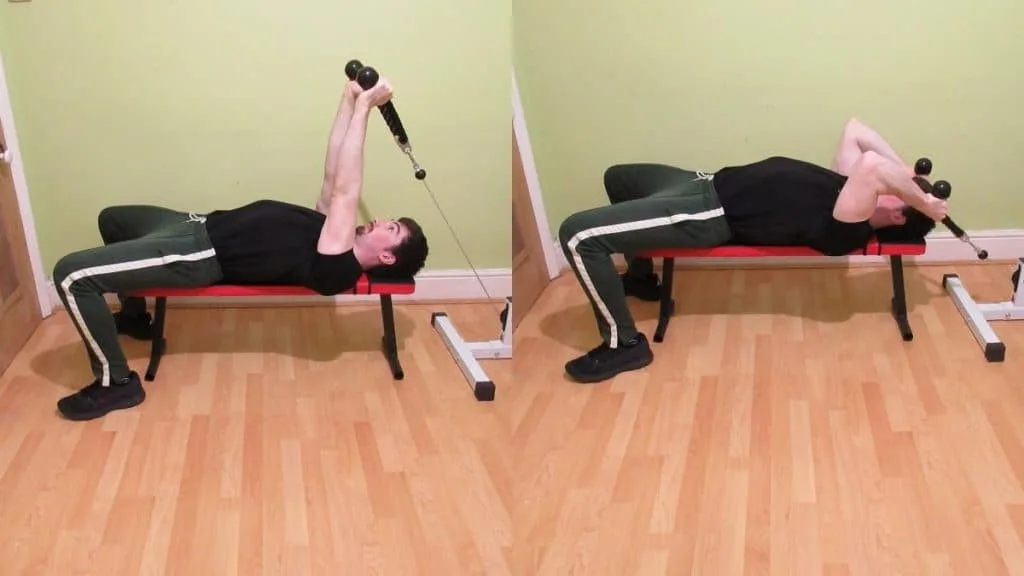
Lying rope cable tricep extensions don’t allow you to lift quite as much weight as the bar version because using the rope requires more stabilization.
The trade-off for the reduced resistance is enhanced triceps activation—specifically, a stronger peak contraction—because you can spread the rope in order to contract your triceps more forcefully.
Lying rope extensions are also an effective exercise for sculpting symmetrical arms because each of your triceps has to lift its own side of the rope.
So even if you have a better mind-muscle connection with your dominant arm, your stronger side can’t take over the movement because you have to lock your triceps out separately in order to complete each rep.
V-bar cable lying tricep extensions
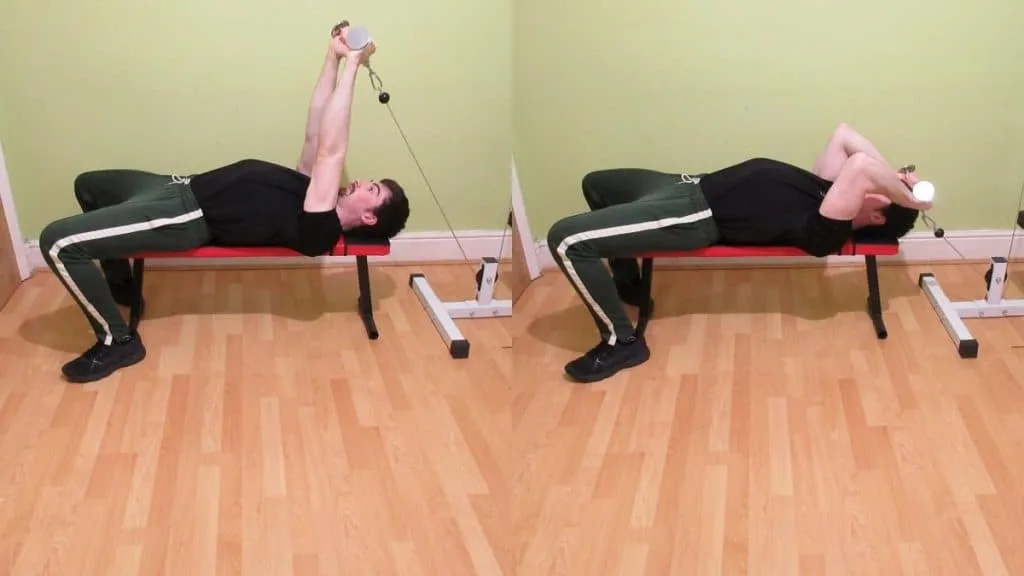
V-bar lying tricep extensions are a cross between the lying rope extension and the lying cable bar extension.
The v-bar is a similar shape to the rope, which makes for an intense peak contraction. But since the v-bar is solid, you can’t really hone in on each specific triceps muscle because it’s not like the ends of the bar can move independently.
For this reason—the fact that the v-bar more closely resembles a barbell than a pair of weights—enables you to overload your triceps with more resistance than the rope.
The only downside is that you’re forced into using the v-bar’s predetermined grip. Whereas with the rope, you have much more freedom to move your hands into the position that best activates your triceps, hence the rope always provides a stronger peak contraction.
Cable lying triceps extension with a bar
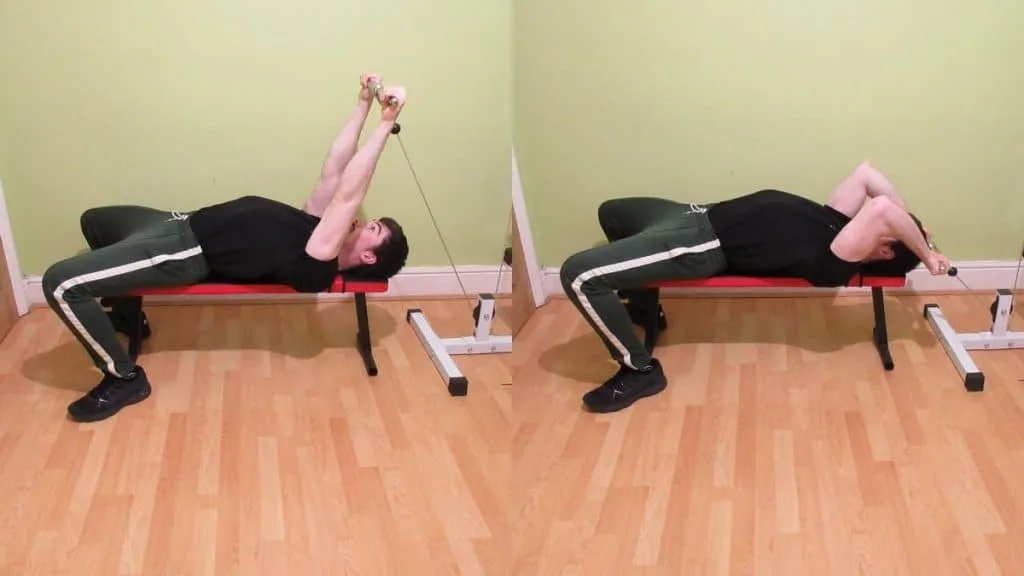
You already saw how to do cable lying triceps extensions with a curved bar, but what about the straight bar? Is that just as effective for training the triceps?
Yes and no.
Like the curved cable attachment, the straight bar attachment enables you to train your triceps with plenty of resistance because it’s easier to stabilize than the likes of a triceps rope.
The main drawback of using a straight bar over a curved bar is that it forces your hands into full pronation. Lifting with your palms facing completely forward like this can put a lot of stress on your wrists if you’re using a decent amount of weight. This discomfort, in turn, can make it harder to focus on training your triceps, which ultimately makes the movement less effective.
Using a curved bar, on the other hand, allows you to take advantage of the semi-pronated grips, which are naturally a lot more comfortable to hold onto.
So, by all means, use the straight bar if that’s comfortable for you. But if you plan on getting strong at the cable lying triceps extension, then sticking with the EZ attachment is a good preventative measure against future wrist pain.
Dual pulley cable lying tricep extension
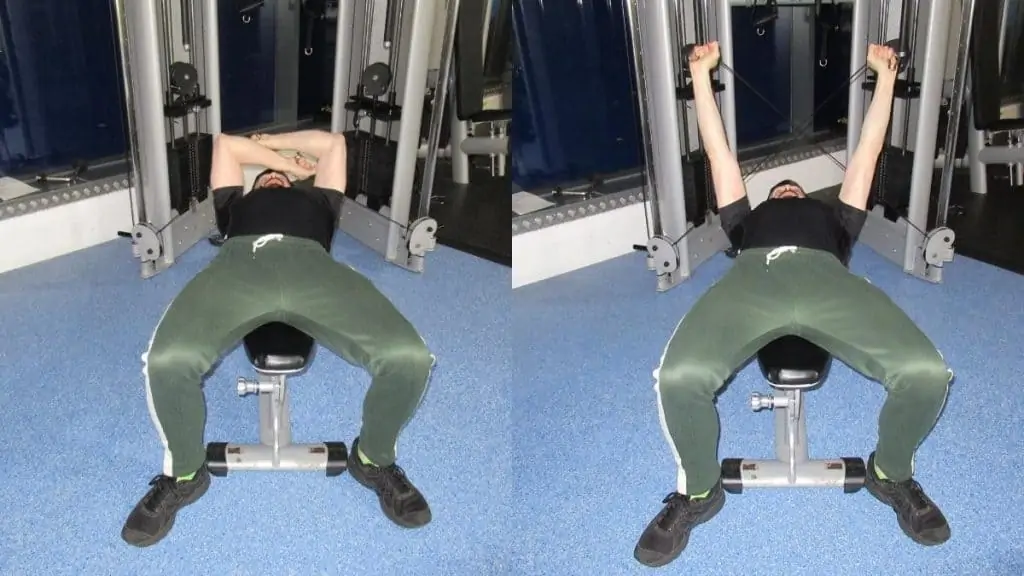
The dual pulley cable lying tricep extension is similar to the dumbbell variation of this exercise in that you’re training both of your triceps in an isolateral fashion.
This isolateral training technique is an effective tactic for sculpting symmetrical arms because it ensures that both of your triceps are receiving the same amount of work.
The only drawback is that, in order to perform the exercise correctly, you’ll need access to both sides of a compact cable station, which isn’t always achievable if you’re training in a busy gym.
On the positive side, the movement doesn’t require any cable attachments (and indeed, you shouldn’t use any) because you just grab the ends of the cables as if they were weights.
One-arm lying cable extension
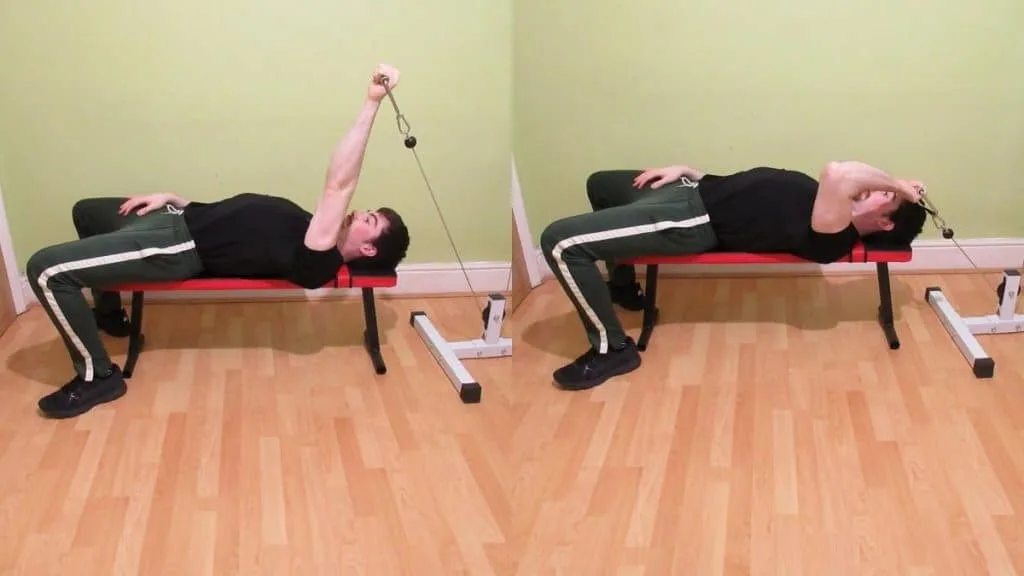
If you want to hone in on each of your triceps and develop maximum symmetry, then performing single arm lying triceps extensions with cables is a great idea.
Training your triceps in a unilateral fashion like this means that your brain no longer needs to split its focus across two limbs; your central nervous system can dedicate all of its resources to working each of your triceps optimally.
The one arm cable lying tricep extension is also a highly versatile exercise because you can do it with a single handle, a single tricep rope, or without any attachments at all. I recommend trying all three options, if possible, to see which version provides the best muscle activation for you.
This extra triceps isolation does come at a cost, however, because your sets will take twice as long to perform. So if you’re short on time, then this exercise probably isn’t for you.
Yet, if you’re willing to spend some extra time in the gym in order to improve the symmetry of your physique, then one arm cable lying tricep extensions are among the best exercises that you can do to develop a pair of proportional arms.
Lying cable extensions on the seated row station
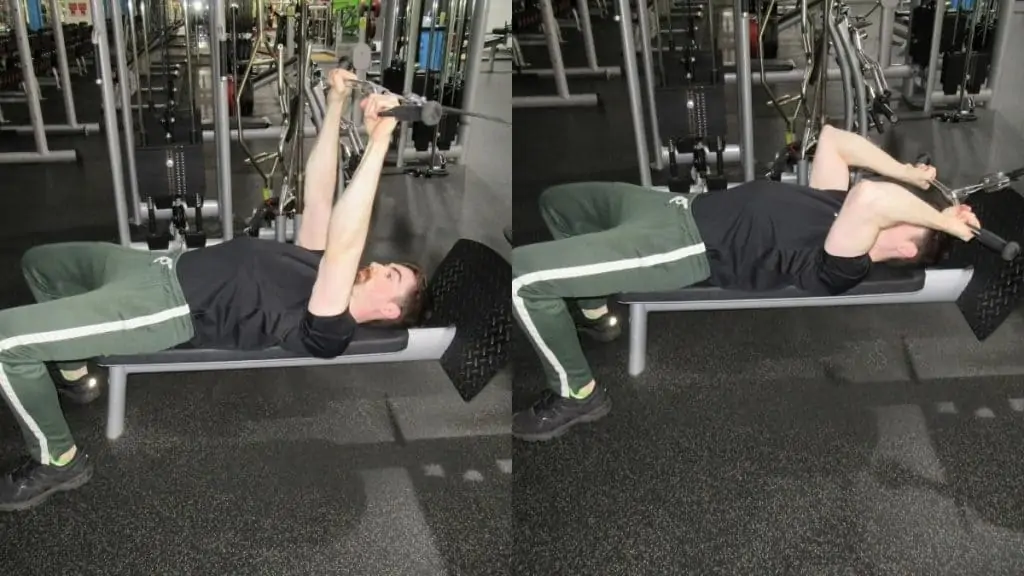
If all the benches and cable machines are taken at the gym (or if you just can’t be bothered to wheel a bench over to a cable column), then you can do the cable lying triceps extension on the seated row station instead.
Although you might get a few funny looks from fellow gym users, performing lying cable extensions on the seated row may actually be the best option of the lot because the seat is already perfectly aligned with the pulley.
Therefore, you won’t have to waste time finding the optimal bench position, which means that you can just get on with training your triceps and enjoy a more efficient workout as a result.
Read More: Decline cable triceps extensions
Conclusion: Should you do the lying cable extension for your triceps?
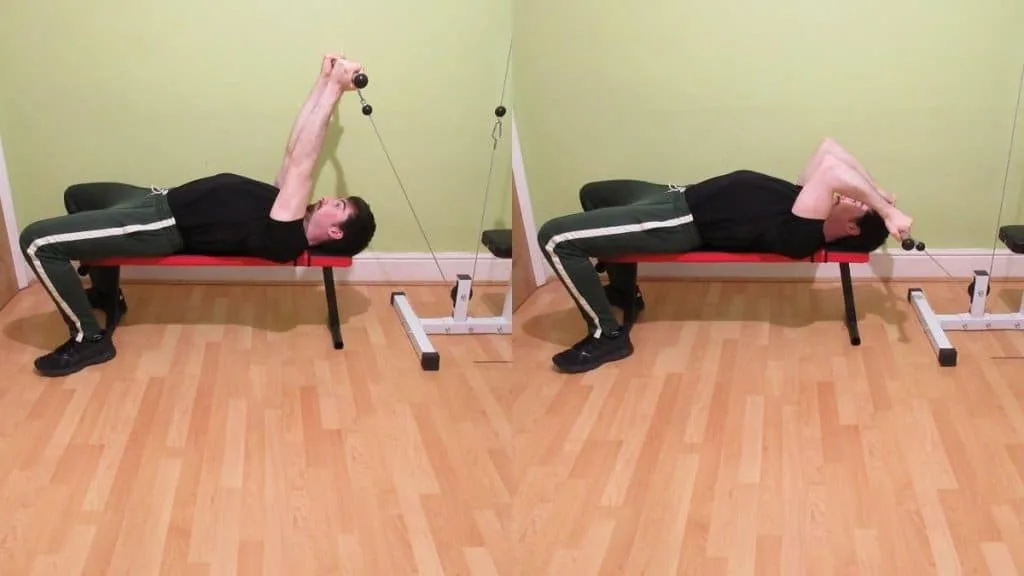
The cable lying tricep extension provides constant tension that challenges your triceps at every point during the rep. This is because it’s down to your muscles to contract against the resistance as soon as you lift the weight off the stack.
In other words, you can’t just rest at the top of each rep like you can with free-weight lying extensions because the pulley is always exerting tension on your triceps.
The lying cable extension is also highly customizable; you can perform it with whatever cable attachment lets you get the best triceps contraction and which is most comfortable to hold.
Additionally, lying cable extensions are great for gaining strength because cable machine weight stacks typically ascend in very manageable increments. As such, you won’t have to drastically decrease your reps in order to progress to the next resistance level.
If you don’t have access to the necessary equipment to do this exercise, then check out our cable lying triceps extension alternative guide.

